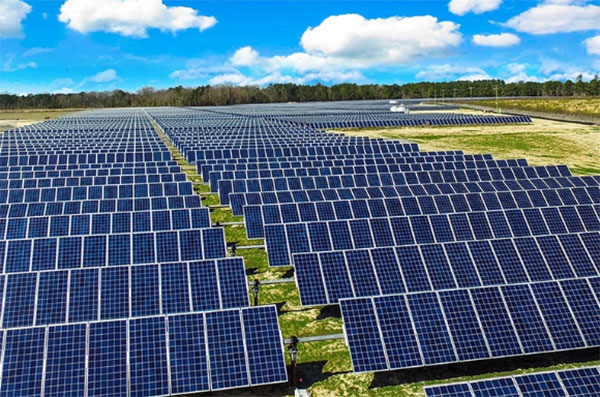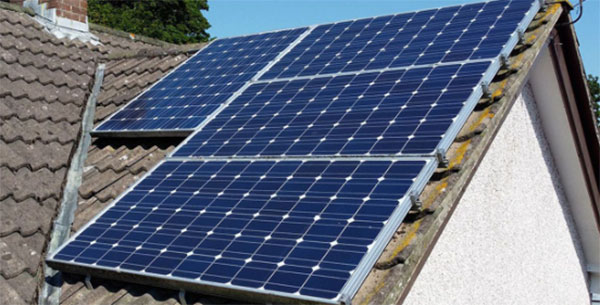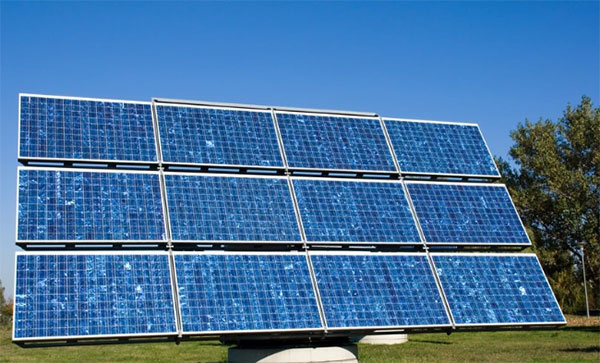Description
Solar panels may underperform due to shading, dirt accumulation, technical malfunctions, improper installation, or aging and wear.

Factors Affecting Solar Panel Efficiency
Impact of Weather Conditions
Solar panels are significantly influenced by weather conditions. For instance,
peak efficiency is often achieved in sunny conditions. However, contrary to popular belief, extremely hot temperatures can reduce efficiency due to overheating. On the other hand, cold, sunny environments can enhance performance. Rainfall, while reducing immediate output, can help by cleaning the panels, thereby improving efficiency over time.
Effects of Shading and Obstructions
Shading, even partial, can drastically reduce the power output of solar panels. This effect is due to the way solar cells are interconnected; even a small amount of shade on one panel can reduce the output of the entire system. Trees, nearby buildings, and even dust or bird droppings can cause these obstructions. Regular cleaning and strategic placement of panels are vital to minimize these effects.
Optimal Panel Specifications Selecting solar panels with the right specifications is crucial. For example, panels with a
power output range of 250-400 watts are commonly used in residential installations. The
efficiency rate of panels, typically ranging from 15% to 20%, is also a key factor. Higher efficiency rates usually mean higher costs but can be more space-efficient.
Longevity and Degradation Solar panels generally have a
lifespan of about 25-30 years. However, their efficiency gradually decreases over time, known as degradation rate. A standard degradation rate is about 0.5% per year, meaning a panel will retain about 88% of its original efficiency after 25 years.
Cost Implications The
initial cost of solar panel installation can be significant, with prices varying based on panel quality, size, and installation complexity. However, the long-term
savings on electricity bills and potential
government incentives can offset these costs.
Size and Dimensional Constraints The size of solar panels is also crucial, especially for residential installations with limited roof space. Standard panels are about 1.6 square meters in size, but efficiency must be balanced with available space.
Material Quality The
material quality of solar panels affects their efficiency and durability. Monocrystalline silicon panels, for example, offer higher efficiency but come at a higher cost compared to polycrystalline silicon panels.
Advantages and Limitations The main advantage of solar panels is their ability to generate renewable energy and reduce electricity costs. However, limitations include dependency on weather conditions and the need for a significant initial investment.

Maintenance and Technical Issues
Importance of Regular Cleaning
Regular cleaning of solar panels is crucial for maintaining their efficiency. Dust, dirt, leaves, and even bird droppings can significantly reduce the solar panel's ability to absorb sunlight. In areas with heavy pollution or frequent bird activity, cleaning might be required more often. For example:
- Reduction in Efficiency: Studies have shown that dirty solar panels can lose 15-25% of their efficiency.
- Cleaning Schedule: In general, cleaning solar panels every 6-12 months is recommended, but this can vary depending on the local environment.
- Professional Cleaning vs. DIY: While professional cleaning services ensure thoroughness and safety, DIY cleaning can be cost-effective. However, it's important to use proper tools and techniques to avoid damaging the panels.
Identifying and Resolving Technical Malfunctions
Technical malfunctions in solar panel systems can range from minor issues to major system failures. Some common issues include:
- Inverter Problems: The inverter, which converts solar energy into usable electricity, is often a common point of failure. A malfunctioning inverter can dramatically decrease system performance.
- Wiring Issues: Faulty or aged wiring can lead to reduced power output and potential safety hazards.
- Panel Damage: Physical damage to panels, such as cracks or water ingress, can significantly impair their function.
Steps for Troubleshooting:
- Regular Inspection: Conduct regular visual inspections for any physical damage or anomalies.
- Monitoring System Performance: Keep an eye on the energy output data. A sudden drop in performance often indicates an issue.
- Consulting Professionals: For complex issues, consulting with a professional technician is advisable to avoid further damage.
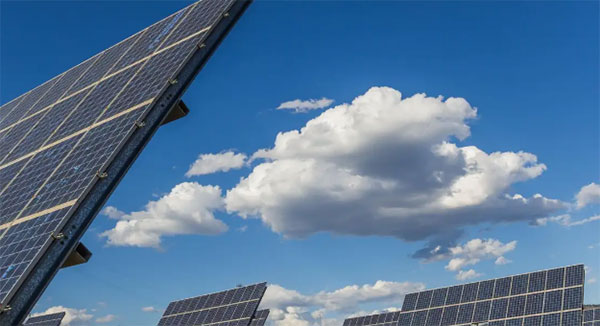
Installation and Positioning
Optimal Placement and Angle for Maximum Exposure
Proper placement and angling of solar panels are critical for maximizing solar energy absorption. The following points highlight the importance of these factors:
- Directional Placement: In the Northern Hemisphere, solar panels should ideally face south to capture the most sunlight. In the Southern Hemisphere, they should face north.
- Optimal Tilt Angle: The angle at which panels are installed affects their efficiency. This angle should ideally match the latitude of the installation location to maximize sun exposure throughout the year. For example, a location at 35° latitude should have the panels tilted at a 35° angle.
- Consideration of Seasonal Changes: Some installations allow for adjustable tilt angles to optimize for seasonal variations in the sun's position.
- Avoiding Shade: It's vital to place solar panels in areas free from shade caused by trees, buildings, or other structures, especially during peak sunlight hours.
Impact of Incorrect Installation
Improper installation of solar panels can lead to several problems affecting the system's performance and longevity:
- Reduced Efficiency: Incorrect angling or orientation can significantly reduce the solar energy absorption, leading to lower power output.
- Structural Issues: Poor installation can lead to physical damage over time, such as water leakage or detachment during extreme weather.
- Safety Risks: Improper electrical installation can pose fire hazards or electrical risks.
- Warranty Voidance: Many solar panel warranties require professional installation. Incorrect DIY installation might void these warranties.
Best Practices for Installation:
- Hiring Professionals: It's recommended to use qualified and experienced professionals for solar panel installation.
- Site Assessment: Conducting a thorough site assessment for sun exposure, shading, and roof condition before installation.
- Local Regulations and Incentives: Understanding local building codes, regulations, and potential incentives for solar installation.

Solar Panel Age and Wear
Understanding Degradation Over Time
Solar panels, like any other technology, experience wear and degradation over time. This degradation affects their efficiency and power output capabilities.
- Annual Degradation Rate: On average, solar panels degrade at a rate of about 0.5% to 1% per year. This means after 20 years, most solar panels will operate at about 80-90% of their original efficiency.
- Factors Influencing Degradation: Environmental factors like UV exposure, weather cycles, and temperature variations contribute significantly to degradation. High-quality panels with robust construction can have lower degradation rates.
Replacement and Upgrading Options
As solar panels age, their performance dips, which may necessitate replacement or upgrading.
- Typical Lifespan: Most solar panels come with a warranty of 25-30 years, which is generally an indication of their lifespan. However, they can continue to operate beyond this period at reduced efficiency.
- Cost of Replacement: The cost of replacing solar panels depends on the technology and scale of the installation. Prices have generally decreased over the years due to advancements in solar technology.
- Upgrading for More Efficiency: Upgrading to newer models can be a cost-effective decision, as newer panels tend to be more efficient, sometimes offering efficiency rates above 22%.
Deciding When to Replace or Upgrade:
- Performance Monitoring: Regular monitoring of output can indicate when panels are underperforming.
- Economic Consideration: Analyze the cost-benefit of replacing aging panels versus the expected increase in electricity generation from new panels.
- Advancements in Solar Technology: Newer technologies may offer better efficiency, durability, and even aesthetics.
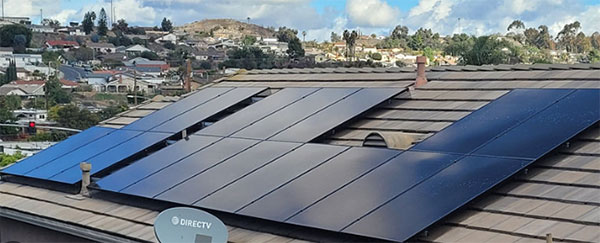
System Compatibility and Configuration
Ensuring Compatibility with Inverters and Batteries
Compatibility between solar panels, inverters, and batteries is paramount for the efficient functioning of the entire solar power system. The inverter's role is to convert the DC power generated by the solar panels into AC power usable in homes and businesses, while batteries store excess energy.
- Inverter Compatibility: The inverter's capacity must match the solar panel system's output. For example, a 5kW solar panel system requires an inverter with a similar capacity. Using an inverter with a lower capacity than the solar panel system can lead to energy wastage or damage to the inverter.
- Battery Specifications: The choice of battery, particularly its storage capacity and power rating, should align with the energy production and consumption needs. For a typical home solar system, a battery capacity ranging from 5kWh to 15kWh is common, depending on energy usage patterns.
- Quality and Warranty Considerations: Selecting high-quality components with reliable warranties ensures longevity and performance stability. Components from reputable manufacturers often come with extended warranties, offering peace of mind and long-term cost benefits.
Optimal System Configuration for Efficiency
The configuration of a solar power system plays a critical role in its overall efficiency and output.
- Balancing Components: The solar panel array's size should harmonize with the inverter's capacity and the battery storage system. An imbalance can lead to underutilization or strain on system components.
- Efficient Design and Layout: The layout of solar panels should maximize sun exposure and minimize shading. Professional design and installation can ensure that panels are positioned for optimal performance throughout the year.
- Monitoring and Management Systems: Modern solar systems include monitoring systems that allow homeowners to track energy production and consumption in real-time. These systems can identify inefficiencies and help optimize energy usage.
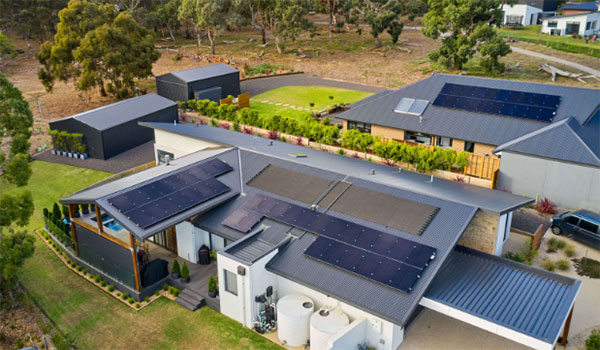
Assessment and Improvement Strategies
Conducting Energy Audits
Energy audits are essential for identifying how effectively a solar power system is operating and where improvements can be made.
- Purpose of Energy Audits: An energy audit assesses energy flows in a system to improve efficiency. It pinpoints where energy is lost and identifies opportunities for energy conservation.
- Audit Process: The process involves examining past energy consumption patterns, inspecting the physical condition of solar panels, and analyzing the system’s output. Tools like infrared cameras can detect if panels are overheating, a sign of malfunction.
- Outcome and Recommendations: Audits typically culminate in a detailed report outlining inefficiencies and recommending solutions. For example, if a system's output is below its expected capacity, the report might suggest maintenance, repositioning of panels, or system upgrades.
Upgrading to Higher Efficiency Panels
Upgrading to more efficient solar panels can significantly boost the system's power output and overall efficiency.
Benefits of High-Efficiency Panels: These panels generate more electricity from the same amount of sunlight compared to standard panels. For instance, where a standard panel might have an efficiency of 15%, a high-efficiency panel could have an efficiency of 22% or more.
Considerations for Upgrading:
Cost vs. Benefit: While higher efficiency panels are more expensive, they can be more cost-effective in the long run, especially in areas with limited space.
Compatibility with Existing System: Ensure that the new panels are compatible with the existing mounting and electrical systems.
Warranty and Longevity: High-efficiency panels often come with longer warranties and more durable designs, offering better value over time.







